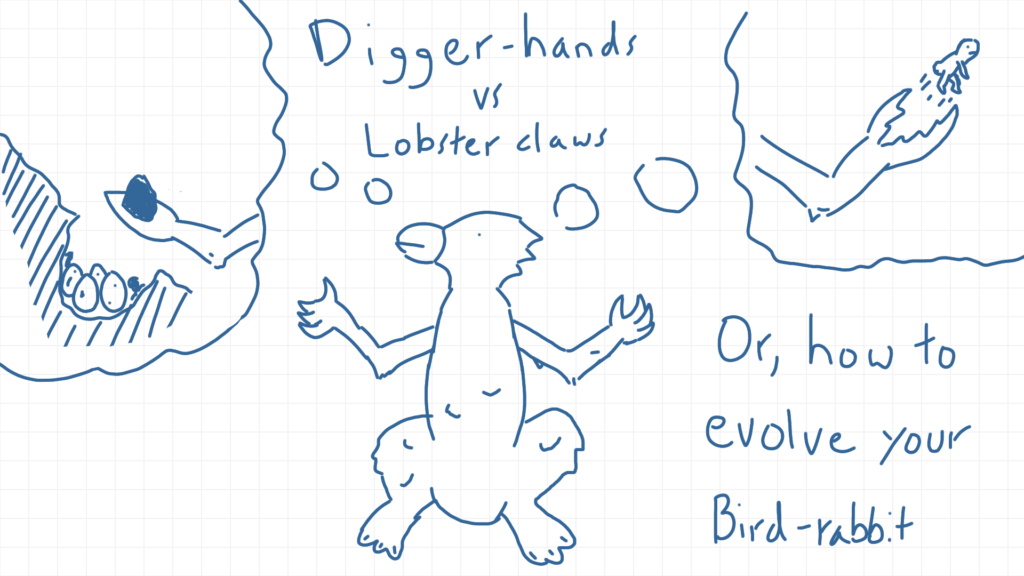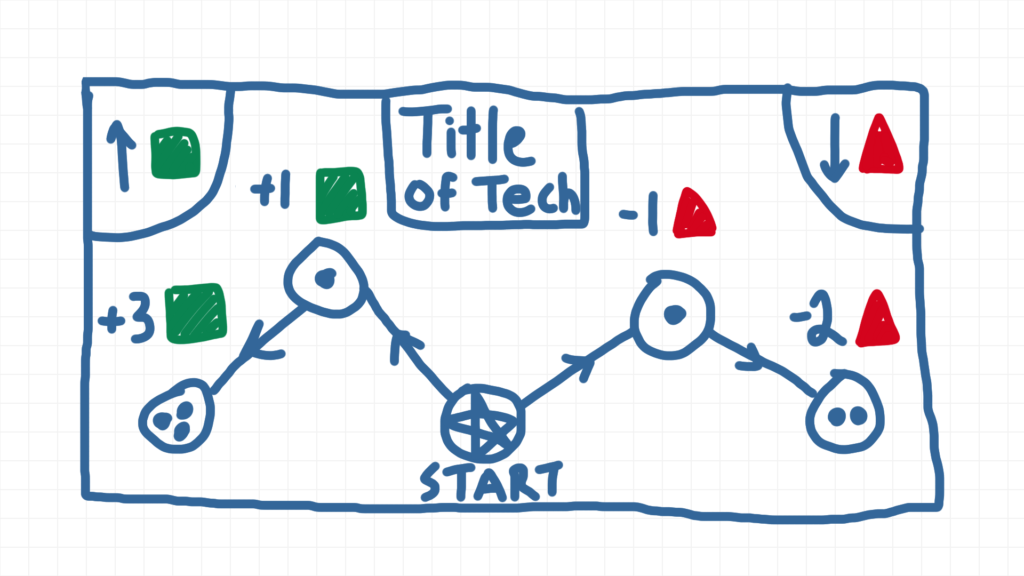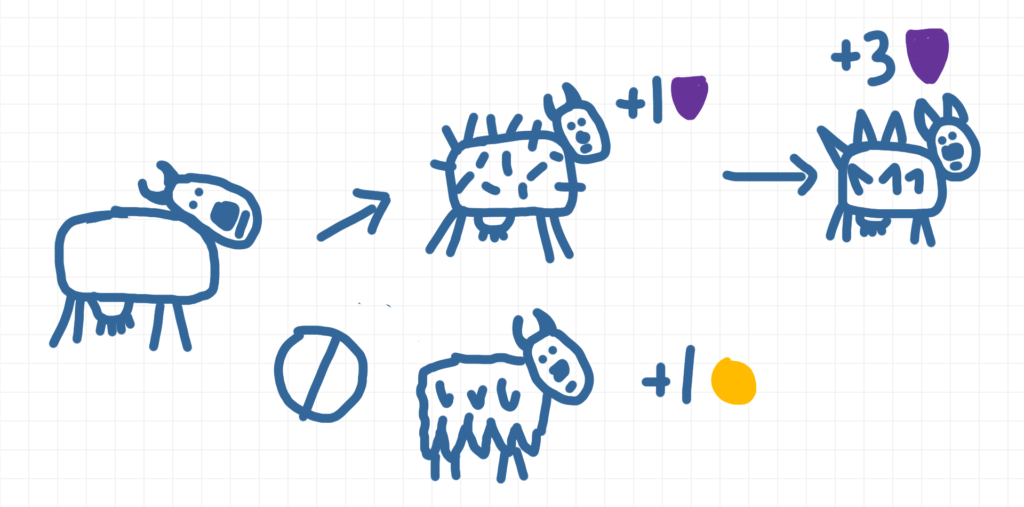A mechanic where unrelated technologies can be advanced for character specialization or evolution.
Part of the draw of a game focused on character evolution is the growth from a puny, ill-adapted neophyte to a strong and able veteran. The character in question might be an actual human (perhaps just a humanoid), or it could be a tech start-up, some bizarre xenofauna, or a microscopic virus trying to infect the world. This post covers a novel way to give those characters different small, permanent abilities that can make your game more interesting.
A big assumption for this idea is that your game has room for those small, permanent abilities. In a game where players compete to grow new lifeforms to fill different ecological niches, these abilities could be some kind of benefit to acquiring food. For example, perhaps a herbivore may gain the ability to eat different kinds of vegetation, rather than just the grass it prefers. Or, perhaps the ability is a novel way for an animal to defend itself against predators.

Alright, lets get to work then. The gist of the idea is that players somehow acquire different “cards” with small decision trees on them. Maybe the players get to pick one for free from a changing buffet, or maybe they buy them in exchange for resources (evolving poisonous spines takes a lot of energy). To increase player interaction, maybe players get two random cards and have to choose one to keep and one to give to an opponent. Whatever you decide, a player ends up with one of these mini-decision tree cards.

These decision tree cards are stand-alone, meaning that the starting point in on the card, and the decision branches don’t leave the card. For a tabletop game, this probably means a larger format for the cards, such as a tarot card (2.75” x 4.75”). This size is still easily shuffled, but large enough to display a start point, and two decision tree branches, each with 1 or 2 nodes.
Players indicate where they are on a given tech tree by placing a colored cube on the appropriate spot. As they choose or buy different improvements or evolved abilities, the colored cube moves down the chosen branch to the new spot. That new spot then grants a given ability or upgrade.
The Evolved Animal Example
For example, in an animal-themed evolution game, players may control different creature archetypes. Perhaps one of these archetypes is initially a generic quadruped herbivore. The player then draws, buys, chooses, or is given a hair-themed evolution card. The player then evolves his creature down the defense track to Quills (+1 Defense). Later, the player then evolves those quills into Spines (+3 Defense). The creature is better defended, but at the cost of not being able to go down the cold-weather track, which would give the creature Shaggy Fur (+1 Warmth).

The boost to abilities is nice, but the real hook here is that the player has to make a decision. In this example, the decision was to stick with defense, and to not go with the mating track. Your game will obviously have to provide good reasons for the player to go down either track. As long as the decision isn’t automatic, you’ve introduced more delicious decision-making for the players.
“No one else is able to eat fruit right now, so that would mean a feast for me. However, if I evolve that ability, I won’t be able to eat meat, which reduces the food available for me later on.”
The Micro-Hero Example
Another great way to use the mini-tech-tree idea is when you don’t want to invest a lot of time growing a character through a series of small decisions. If your goal is to have a bunch of memorable and unique heroes, giving each one a few mini-tech-trees to go down is perfect for this.
Perhaps that generic fighter you started with gets dealt a mini-tech-tree card focused on Shields. The decision might be between a large tower shield or a smaller buckler. The tower shield grants stronger defense, but decreases the fighter’s chance for critical hits (those things are heavy!). The buckler, has less defense, but gives an extra mobility point. The “evolved” tower shield might be some sort of Shield Wall training, that grants invulnerability in one direction while stationary. The “evolved” buckler ability, on the other hand, gives your fighter the ability to immediately counter-attack any successfully blocked attack for double damage.

This method of character development can be relatively constrained by only allowing certain tech-tree cards to go to certain generic character types. For examples, Ranger archetypes may not get that Shield card just discussed, while Barbarians don’t get to play around with the Archery card. On the other hand, it could be really interesting to just deal out the tech-tree cards randomly and see how useful a fireball-throwing, bull-riding pickpocket really is.